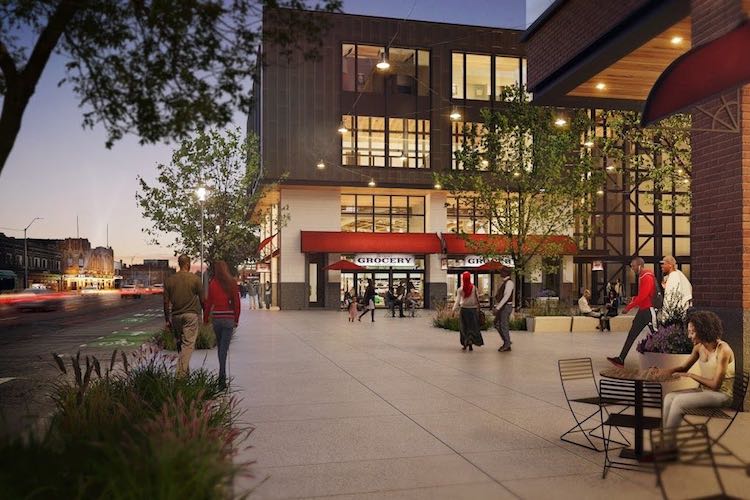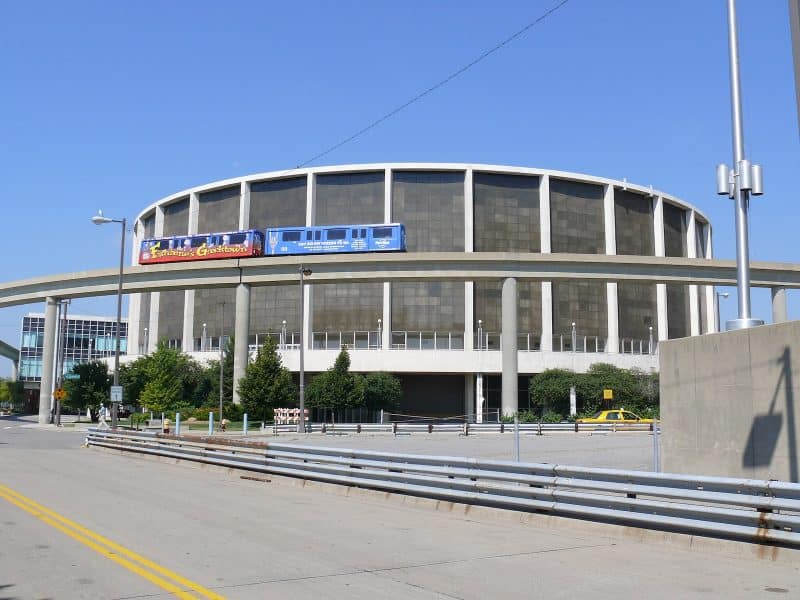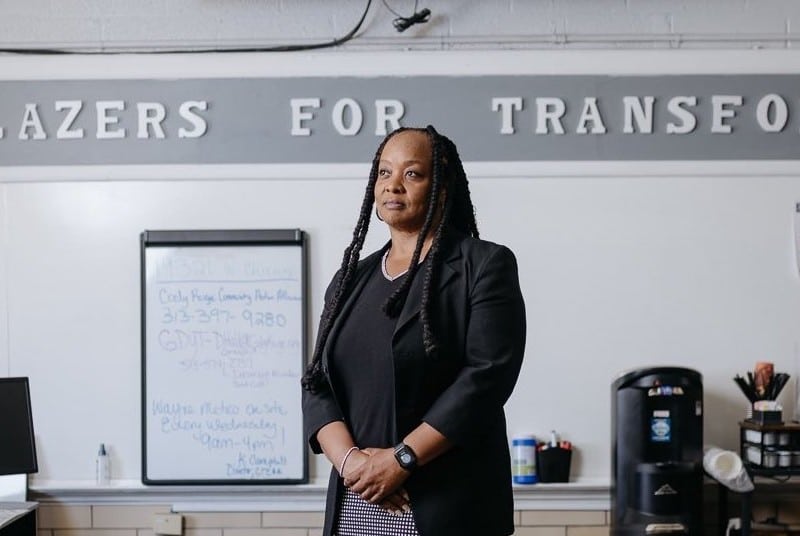Jefferson Ave developments, housing stabilization highlighted in city’s plan for Jefferson Chalmers
On Feb. 16, residents met at the Salvation Army on Conner Street to hear the final recommendations from the city on what they envision for Jefferson Chalmers, and what it's going to take to get there.

For nearly a year, the city of Detroit has been crafting a framework plan in Jefferson Chalmers. The process has involved a number of community meetings, regular gatherings of a Residents in Action committee, and a questionnaire delivered to hundreds of homes in the area.
On Feb. 16, residents met at the Salvation Army on Conner Street for pancakes and to hear the final recommendations from the city on what they envision for Jefferson Chalmers, and what it’s going to take to get there.
Allen Penniman, an urban planner with the city’s Planning and Development Department, has been leading the charge in the neighborhood and delivered the main presentation.
He said that five major priorities were assembled from neighborhood surveys: the desire for a vibrant business district, the improvement of parks and recreation, neighborhood safety, housing stability, and the removal of blight. “The [other priorities] are not going away and can be implemented down the line as resources become available and we study them further,” he added.
Based on these priorities, the city came up with three areas to focus investment and effort.
1. Revitalize Jefferson Avenue
Maurice Cox, director for the city of Detroit’s Planning and Development Department, said in his opening remarks, “In Jefferson Chalmers, you have probably one of the most handsome main streets anywhere in the city.” This sentiment was echoed by its emphasis in the framework plan.
The Kresge Building at 14300 E. Jefferson Ave is slated to be rehabilitated and redeveloped by the city and Jefferson East, Inc. (JEI). It will house a new restaurant, Alma Kitchen, and offices for JEI.
Another JEI project is the redevelopment of the historic Vanity Ballroom, which will have retail on the ground floor and community space upstairs where the ballroom once was.
One of the most exciting announcements is the Jefferson/Piper mixed-use development. This project would bring the first full-service grocery store to the neighborhood in decades. It will also mean local shops, and affordable housing reserved for low-income households.

This project is expected to particularly impact Jefferson Chalmers’ senior community as it is close to senior housing and will, according to Penniman, “help elders age in place. No more driving out to suburbs or getting a ride to run errands.”
2. Stabilize neighborhood residential blocks
One criticism the city has faced in its framework plans is in its definition of affordability. In the presentation, Penniman wanted to be clear what they meant by “affordable.”
For housing, the general standard is that rent or household expenses not exceed more than one-third of take home pay. In Jefferson Chalmers, the median income is currently just under $30,000, which is about 50 percent of the area median income (AMI) used by United States Department of Housing and Urban Development, and which includes Dearborn and the Grosse Pointes in its calculation.
In its new housing in the neighborhood, both apartment and single-family, the city is aiming to stay in 50 to 60 percent AMI range where a one-bedroom apartment goes for around $700 per month.
To stabilize housing, the city will work to preserve more than 500 units of affordable housing and work with developers to build over 100 more.
At the Grayhaven apartments, where 39 units of affordable housing are about to expire, the city will preserve their affordability for another 30 years. A previously announced JEI and Shelbourne development, the Marlborough and IDAO Buildings, will create 23 new units, 12 of which will be affordable, starting at around $950 for a two-bedroom.
The city is also renovating a for-sale rehab bundle that includes four single-family homes and six duplexes for those making $25,000 to $71,000 per year.
For existing homeowners, the city, in partnership, with JEI will offer 0 percent interest loans, and Rebuilding Together Southeast Michigan will provide free home repair services to low-income residents in the neighborhood. On March 2, the neighborhood will host a pathway to homeownership fair for renters looking to own, as well as a tax delinquency seminar on March 19.
One of the more emotional questions locally is what should be done with the Guyton School. Many have strong ties to the building and want it to remain a school, and its future has been a point of contention between planners and residents.
But there are challenges to reopening Guyton as a public school. There is already a Detroit public school in the neighborhood, and the declining numbers of elementary-aged children don’t justify it. In order to make sure the building doesn’t deteriorate beyond repair, the city will issue an RFP for a developer to maintain community use of the ground floor and affordable units on the second.
During the Q&A session, more than one resident voiced their displeasure that Guyton will not reopen as a school, with one saying, “We’re still going to fight for a K-5 school in our neighborhood.”
3. Enhance waterfront parks
The final peg in the plan is about enhancing life on the water with the General Services Department taking the lead. That includes park improvements and a planning study to renovate the Lenox Center at Alfred Brush Ford Park. [For more info, check out our article on the importance on boating and the waterfront to Jefferson Chalmers.]
Much of this work, like redevelopment of the new Norma G’s restaurant, are already completed or under way. Other projects, including initial construction on the Kresge Building and Vanity Ballroom, will begin this spring.
Cox ended the gathering by restating the city’s commitment not just planning projects, but implementing them. “I don’t want to lose sight of what is an extraordinary moment where the city can bring 12 projects with an absolute commitment to getting them done,” Cox said, “That is what we want to be judged by. These are visionary and at same time very, very pragmatic (projects).”
Cox added that, “Over the course of a few months, you’ll start to see buildings being rehabbed, meetings around public investment, around streetscapes, and new stores going into those shops. These improvements show residents who have stuck it out that their community is being revived.”
This article is part of our “On the Ground” series, where a journalist reports from a dedicated neighborhood for weekly coverage. Support for this series is provided by the Kresge Foundation.






